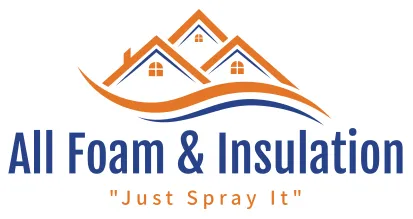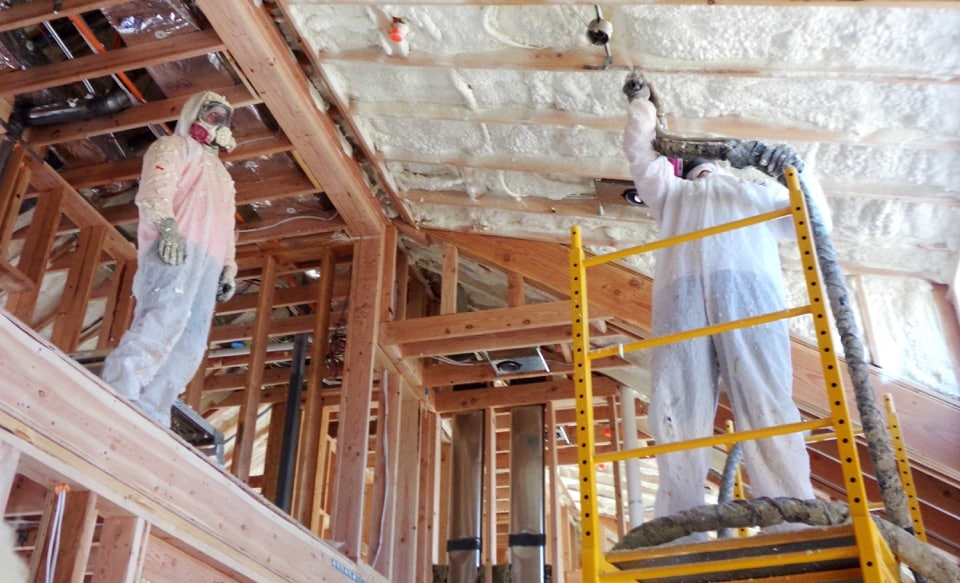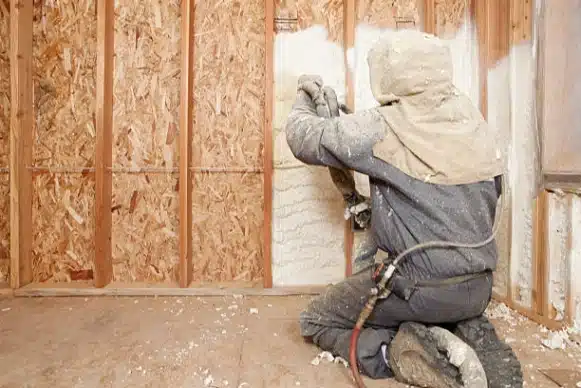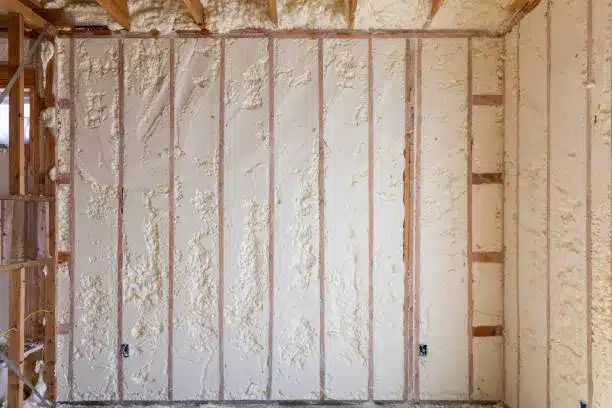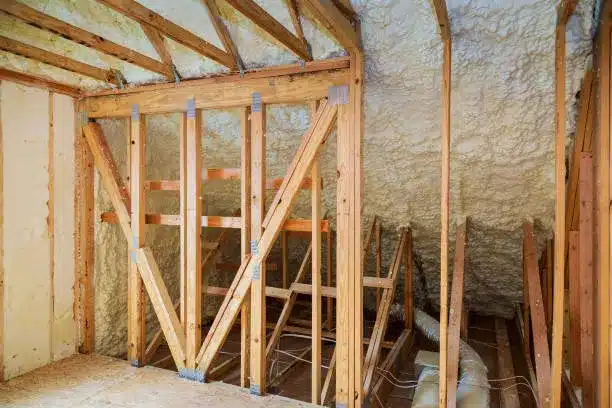Spray foam insulation typically cures within 8 to 24 hours, depending on the type used, temperature, humidity, and thickness of application. Closed-cell spray foam cures faster—often within 8 hours under optimal conditions while open-cell foam may require up to 24 hours. Occupants should avoid re-entering the building until the curing process is complete to avoid exposure to chemical off-gassing.
The curing process directly affects insulation performance, structural integrity, and indoor air quality. This guide covers all technical and environmental factors that impact curing time and offers practical tips based on experience installing foam insulation in various climates and building types.
All Foam & Insulation, LLC has extensive experience with both residential and commercial insulation systems across Oregon. The content below is grounded in field-tested knowledge and current building science practices.
Key Differences in Curing Times
| Spray Foam Type | Typical Cure Time (Hours) | Optimal Temperature Range | Expansion Rate | Occupancy Re-Entry Time |
|---|---|---|---|---|
| Closed-Cell Spray Foam | 8 to 12 | 70°F to 85°F | 30x (minimal expansion) | 8 to 12 hours |
| Open-Cell Spray Foam | 12 to 24 | 65°F to 80°F | 100x (high expansion) | 24 hours |
Factors That Affect Curing Time
Temperature and Humidity
Curing speed is highest when environmental temperatures range between 70°F and 85°F, with relative humidity between 40% and 60%. In colder or wetter climates, additional curing time is needed. In Central and Southern Oregon, spray foam installed during winter often cures more slowly due to lower substrate temperatures.
Bonus Tip: Pre-warming substrates or using temperature-controlled application systems can reduce delays during cold-weather installations.
Thickness of Application
Thicker layers may take longer to cure fully. For closed-cell foam, each pass should not exceed 2 inches. Open-cell foam expands more and should be installed in thinner lifts to ensure uniform curing.
Ventilation During and After Installation
Adequate ventilation ensures chemical components dissipate safely. Mechanical ventilation systems or temporary exhaust fans help speed up curing by reducing VOC concentration.
Substrate Type
Materials like wood, concrete, and metal absorb and retain heat differently. Wood substrates support faster curing, while metal surfaces may need surface priming to ensure proper adhesion and even curing.
Technical Specifications
| Specification | Closed-Cell Spray Foam | Open-Cell Spray Foam |
|---|---|---|
| R-Value per Inch | 6.0 to 7.0 | 3.5 to 3.7 |
| Vapor Permeability | < 1 perm (at 2″) | > 10 perms (at 3″) |
| Compressive Strength | 25 psi | 3 to 5 psi |
| Water Resistance | High | Low |
| Sound Dampening | Moderate | High |
| Curing Off-Gas Duration | 8-24 hours | 12-24 hours |
Regional Considerations for Oregon Installations
Cold Climates (e.g., Bend, La Pine)
- Closed-cell foam offers better thermal resistance and moisture barrier performance.
- Cure times may be extended due to lower ambient temperatures.
- Indoor projects may require supplemental heating.
Humid Zones (e.g., Coastal Areas like Coos Bay)
- Open-cell foam may absorb moisture; closed-cell is more suitable for high-humidity environments.
- Dehumidifiers should be used during and after installation.
Bonus Tip: Monitor dew point on-site before installation. Applying foam too close to dew point can delay curing and weaken bond strength.
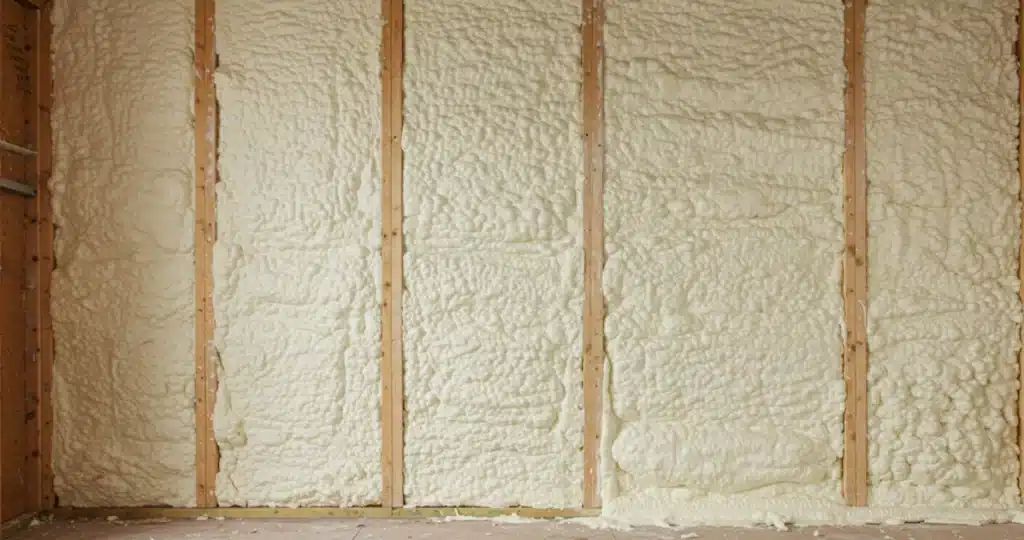
Things to Consider Before Making a Decision
- Project Type: Interior vs. exterior, new build vs. retrofit
- Application Area: Wall cavities, attic, crawl space, or roof deck
- Building Use: Residential or commercial space
- Occupancy Requirements: Can the building be vacated for 24 hours?
- Ventilation Access: Is mechanical ventilation available during curing?
Closely Related Services from All Foam & Insulation, LLC
- Closed-Cell Spray Foam: High R-value and moisture resistance for attics, crawlspaces, and exterior walls.
- Open-Cell Spray Foam: Cost-effective air sealing with excellent sound dampening for interior wall applications.
- Blown-In Insulation: Ideal for attic retrofits with existing structures.
- Membrane Roofing: Applied over foam-insulated substrates for added weather protection.
Common Questions
Can spray foam cure faster with fans or heaters?
Yes, but only under controlled conditions. Improper use can cause uneven curing or cracking.
Is it safe to stay in the house during curing?
No. All occupants should vacate until foam is fully cured, typically after 8 to 24 hours.
What happens if spray foam doesn’t cure properly?
It may off-gas for longer periods, compromise insulation performance, and fail building inspections.
How can I tell if the foam has cured?
Fully cured foam is dry to the touch, rigid, and odorless. Uncured foam may feel tacky or emit strong odors.
Get Expert Insulation Guidance
For accurate installation and reliable results, contact All Foam & Insulation, LLC. Field-tested methods, attention to regional factors, and deep product knowledge ensure optimal performance for every insulation project.
Phone: (541) 826-9600 Email: [email protected].
FAQ Section
How long should I wait before installing drywall over cured foam?
Wait at least 24 hours. This ensures full curing and prevents trapping residual vapors.
Can spray foam be applied during winter?
Yes, but application conditions must be tightly controlled. Surface and ambient temperatures should meet product requirements.
Does curing time affect insulation performance?
Yes. Incomplete curing leads to off-gassing and compromised R-values.
Should old insulation be removed before spraying?
Yes. Old insulation can interfere with adhesion and reduce effectiveness.
What safety measures are required during application?
Technicians must use full PPE, including respirators. Ventilation is critical until curing is complete.

